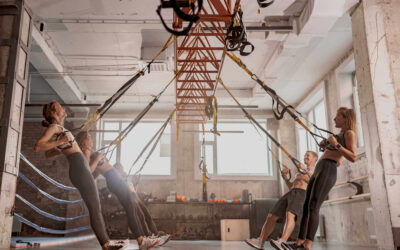In a modern functional gym, intensity is part of everyday life: heavy loads, explosive movements, high training frequency. But as your athletes push their limits, the risk of injury increases too. That’s where the difference between a standard gym and a truly professional one becomes clear: prevention.
Why Is Injury Prevention So Important?
As a gym owner or head coach, your job isn’t just to improve your members’ performance. You also have a duty to protect their long-term health, maintain their motivation, and foster a loyal, engaged community. A solid preventive approach not only reduces injury risk, but also increases member retention, trust, and the perceived quality of your training.
Most Common Injuries in Functional Training – and Why They Happen
Before we dive into how to prevent injuries, let’s understand what we’re trying to avoid. Here are some of the most frequent injuries in functional training environments, and the usual causes behind them:
-
Shoulder instability: Often linked to poor technique in overhead movements like push press or snatches.
-
Knee pain: Common when performing deep squats without a solid mobility base or adequate control.
-
Lower back issues: Typically caused by deadlifts performed without proper core activation.
-
Tendinopathies (e.g. Achilles tendon): Often related to excessive jumping or plyometric work without progression.
-
Wrist pain: A result of high-volume gymnastics or Olympic lifts without balancing mobility or strength work.
The good news? All of these are preventable — if you build injury prevention into the foundations of your coaching.
7 Effective Strategies to Prevent Injuries in Your Functional Gym
1. Prioritise Technique Over Intensity
Correct movement saves more athletes than any wrist wrap or belt ever will. Quality coaching should focus on proper mechanics, individual scaling, and structured progressions. Good technique is non-negotiable.
2. Make Warm-Ups and Mobility Work Essential
Warming up isn’t just about increasing heart rate. A smart warm-up includes joint mobility, muscle activation, and movement-specific prep. It’s your first and best line of defence against injuries.
3. Manage Training Load with a Smart Programme
Avoid overloading athletes week after week. Incorporate deload weeks every 4–6 weeks, adjust intensity based on experience level, and take into account external stressors like sleep, work or nutrition. Load management is essential for longevity.
4. Make Prehab a Core Part of Your Programme
Injury prevention shouldn’t be an “add-on”. Instead, integrate prehab exercises into regular classes. Think:
-
Unilateral movements
-
Isometrics and stabilisation work
-
Anti-rotational core training
-
Controlled plyometrics
Spending 10–15 minutes, two or three times per week, pays off massively.
5. Promote Active Recovery as a Standard
Athletes who recover well, train better. Encourage active recovery sessions, offer mobility classes, partner with massage therapists or physios if possible, and educate members on sleep and rest tracking. Recovery is not optional.
6. Invest in Your Coaching Team’s Education
A well-trained coach can spot bad form, adapt a movement before injury occurs, and guide athletes safely through progressions. Prioritise ongoing training in biomechanics, injury signs, regressions, and pain management.
7. Implement an Injury Tracking and Feedback System
What gets measured gets improved. Set up an internal system to track:
-
Who is getting injured
-
In what type of session or movement
-
Which coaches or time slots are associated
-
Any repeating patterns
This data helps you take proactive, preventive action across your gym.
FAQs from Gym Owners and Coaches
How do I get my members to take injury prevention seriously?
Bring it into your daily coaching language. Explain why you’re doing certain exercises and create a culture where movement quality always comes first.
Do I need a specific injury prevention class?
You can offer one, but the best approach is to integrate injury prevention into every class. That way, everyone benefits consistently.
How do I know if our prevention strategy is working?
You’ll see fewer injuries, improved training consistency, better athlete confidence, and higher member satisfaction.
Injury Prevention Isn’t Optional — It’s a Competitive Advantage
A gym that takes injury prevention seriously doesn’t just protect its athletes — it earns their trust. It builds a strong reputation. It grows sustainably.
🔑 Coaches who prevent injuries build credibility.
🔑 Gyms with preventive systems retain clients and grow stronger long term.


